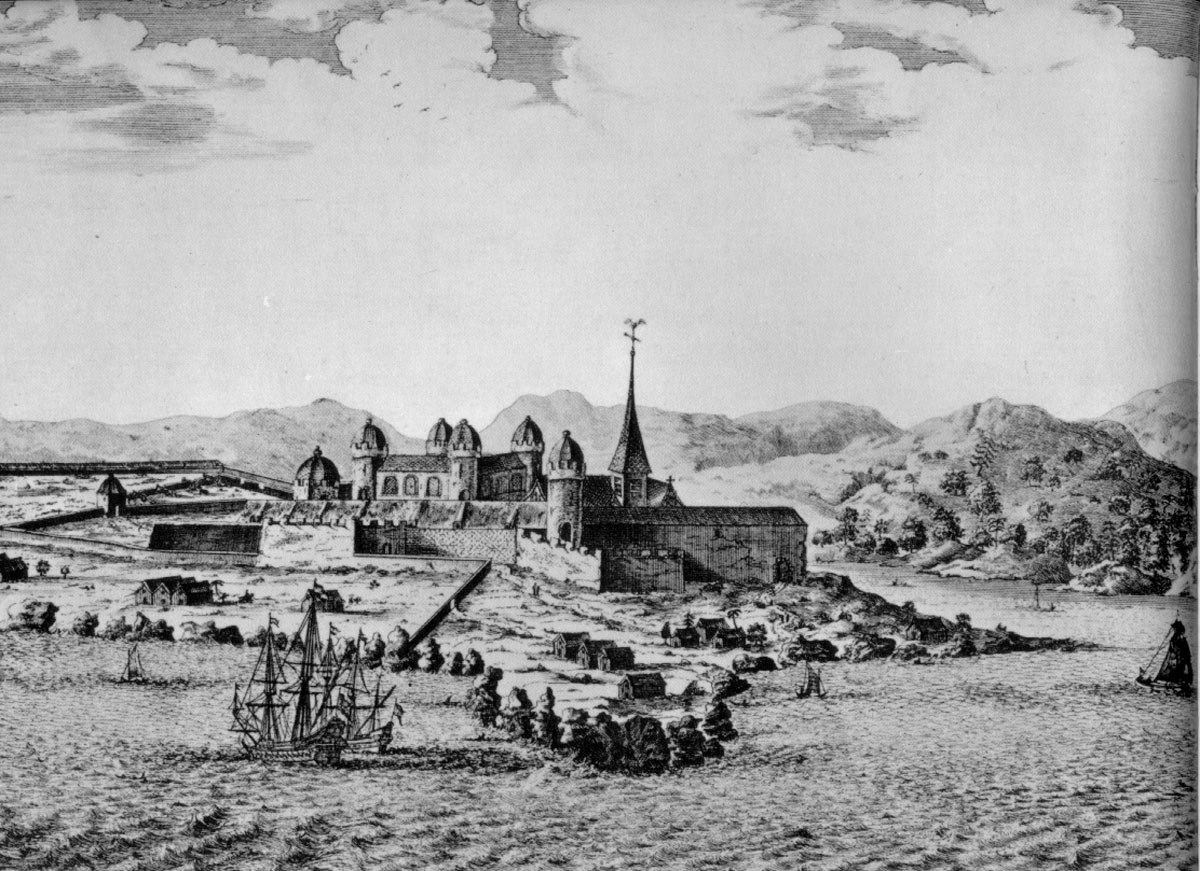
Portuguese Feitorias established
Arguin, MauritaniaDuring the territorial and economic expansion of the Age of Discovery, the factory was adapted by the Portuguese and spread throughout from West Africa to Southeast Asia. The Portuguese feitorias were mostly fortified trading posts settled in coastal areas, built to centralize and thus dominate the local trade of products with the Portuguese kingdom (and thence to Europe). They served simultaneously as market, warehouse, support to the navigation and customs and were governed by a feitor ("factor") responsible for managing the trade, buying and trading products on behalf of the king and collecting taxes (usually 20%).
The first Portuguese feitoria overseas was established by Henry the Navigator in 1445 on the island of Arguin, off the coast of Mauritania. It was built to attract Muslim traders and monopolize the business in the routes traveled in North Africa. It served as a model for a chain of African feitorias, Elmina Castle being the most notorious.
Between the 15th and 16th centuries, a chain of about 50 Portuguese forts either housed or protected feitorias along the coasts of West and East Africa, the Indian Ocean, China, Japan, and South America. The main factories of the Portuguese East Indies, were in Goa, Malacca, Ormuz, Ternate, Macao, and the richest possession of Bassein that went on become the financial centre of India as Bombay (Mumbai). They were mainly driven by the trade of gold and slaves on the coast of Guinea, spices in the Indian Ocean, and sugar cane in the New World. They were also used for local triangular trade between several territories, like Goa-Macau-Nagasaki, trading products such as sugar, pepper, coconut, timber, horses, grain, feathers from exotic Indonesian birds, precious stones, silks and porcelain from the East, among many other products. In the Indian Ocean, the trade in Portuguese factories was enforced and increased by a merchant ship licensing system: the cartazes.
From the feitorias, the products went to the main outpost in Goa, then to Portugal where they were traded in the Casa da Índia, which also managed exports to India. There they were sold, or re-exported to the Royal Portuguese Factory in Antwerp, where they were distributed to the rest of Europe.
Easily supplied and defended by sea, the factories worked as independent colonial bases. They provided safety, both for the Portuguese, and at times for the territories in which they were built, protecting against constant rivalries and piracy. They allowed Portugal to dominate trade in the Atlantic and Indian oceans, establishing a vast empire with scarce human and territorial resources. Over time, the feitorias were sometimes licensed to private entrepreneurs, giving rise to some conflict between abusive private interests and local populations, such as in the Maldives.
